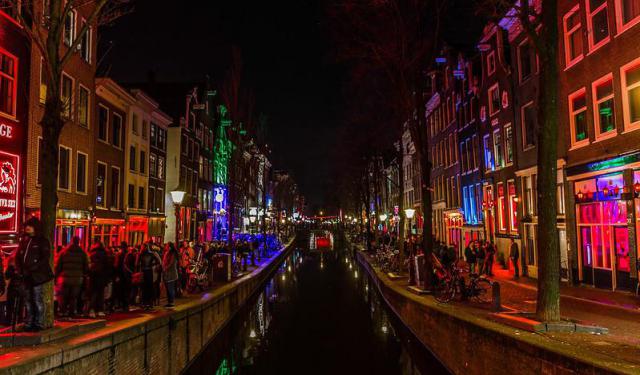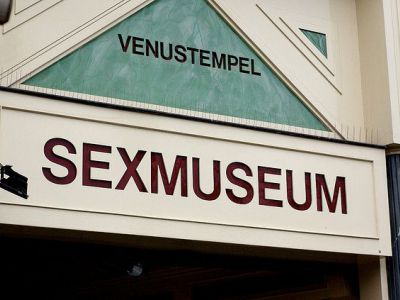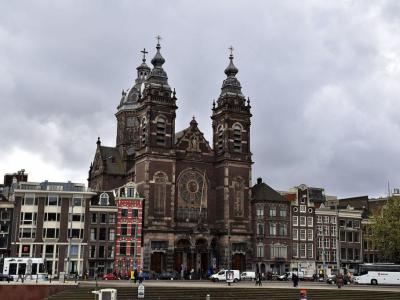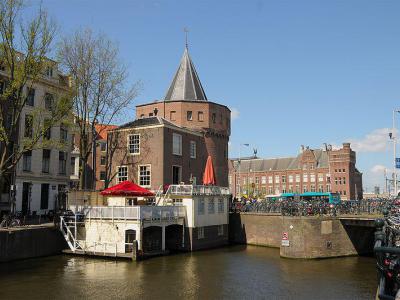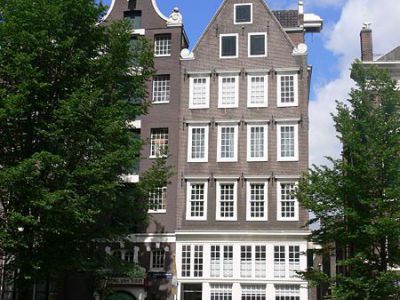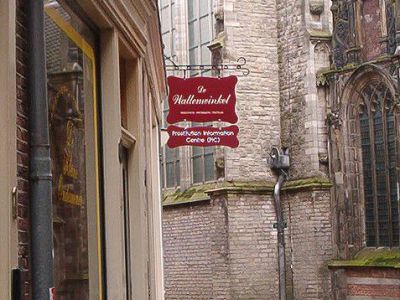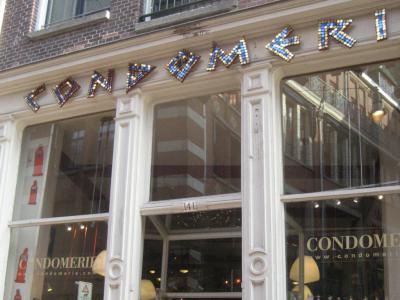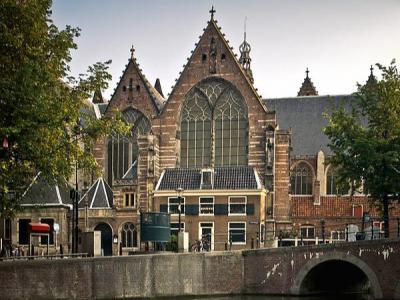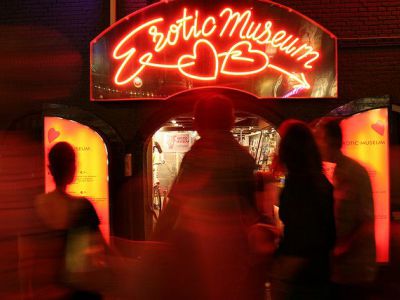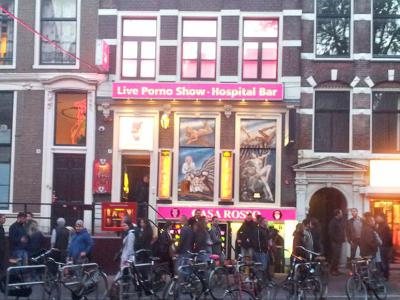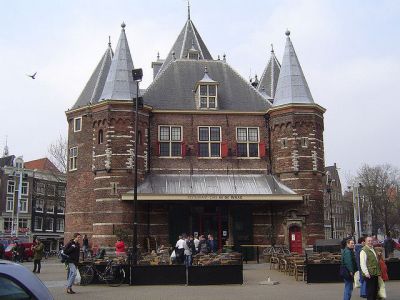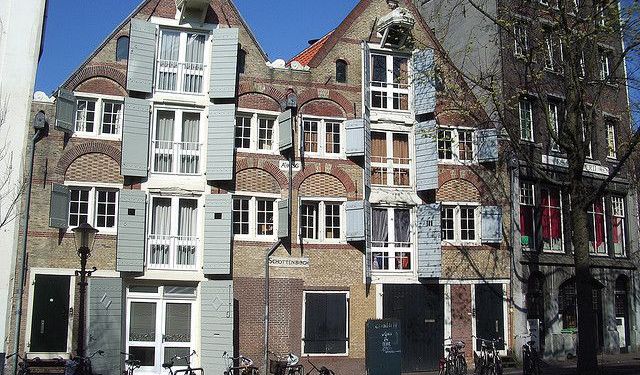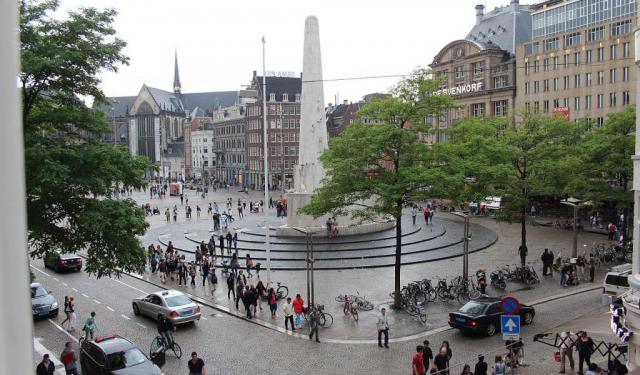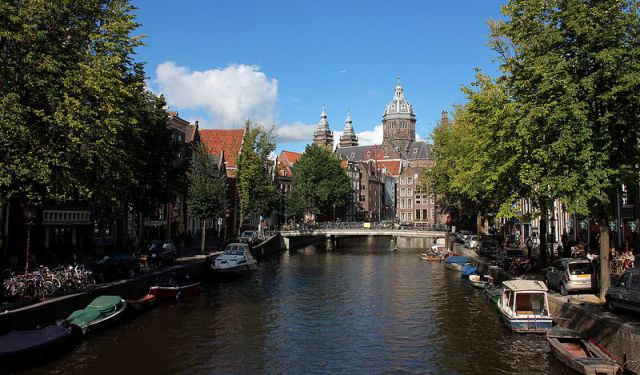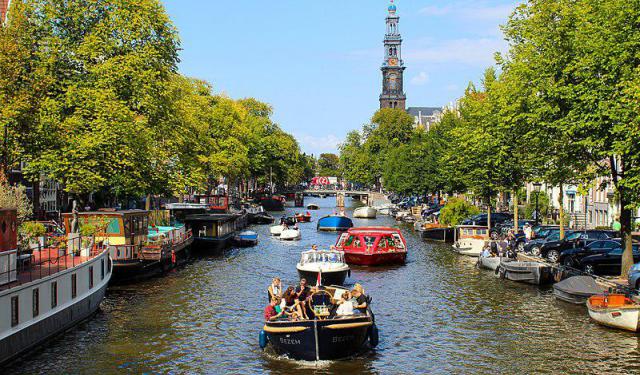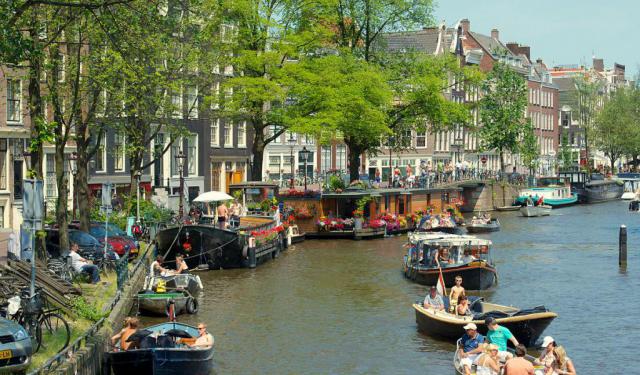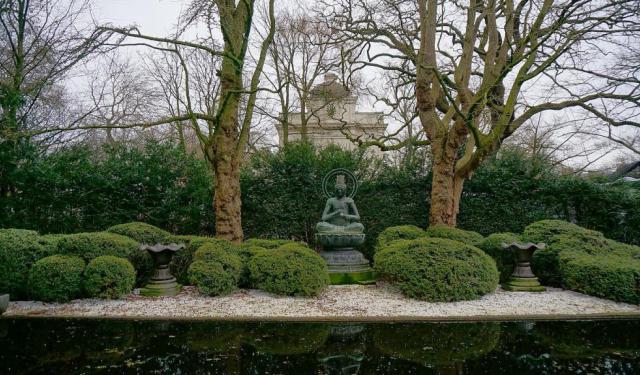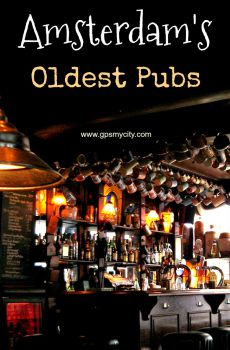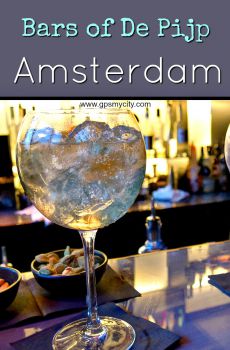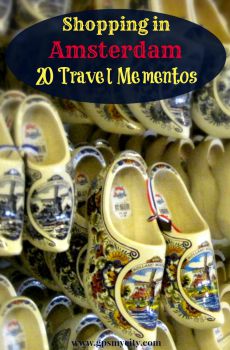Audio Guide: Red Light District Walking Tour (Self Guided), Amsterdam
For centuries, Amsterdam’s Red Light District has been a source of endless intrigue. Its heart and the most historic section, De Wallen, is a fascinating blend of medieval charm and modern-day notoriety. Here, you’ll find timeworn canal houses leaning at curious angles, narrow cobblestone alleys lined with old bars, cozy shops, and a sprinkling of late-night establishments. And of course, the district’s defining feature: the glowing red windows where scantily clad women represent the city’s long-legalized tradition of sex work.
But this neighborhood is much more than its reputation. Beyond the iconic red lights and the infamous sex shops, peep shows, and cannabis cafés, you’ll encounter historic gems and cultural landmarks. The Old Church-Amsterdam’s oldest church, dating back to the early 14th century-stands as a stunning Gothic masterpiece, now home to a remarkable collection of contemporary art. The Weeping Tower, once part of the city’s defensive walls, whispers tales of Amsterdam’s maritime history. Museums like Our Lord in the Attic, hidden within a 17th-century canal house, reveal the city’s deep religious and cultural layers.
Historically, the Red Light District owes its colorful reputation to Amsterdam’s maritime past. In the Middle Ages, sailors arriving after long voyages found a place that catered to their earthly pleasures-a mixture of inns, taverns, and brothels. Over time, this area near the harbor became synonymous with vice and revelry. By the 15th and 16th centuries, local authorities, true to their pragmatic Dutch nature, had largely accepted prostitution as a fixture of city life, regulating it rather than attempting to eliminate it outright. This continued for centuries, and eventually, the trade became fully legalized, adding a new layer of transparency and safety to an age-old profession.
Today, visitors to the Red Light District can learn about its layered past and present in places like the Prostitution Information Center, which educates the public about the industry and defends the rights of those working within it. Meanwhile, the Erotic Museum offers a curated look at the district’s colorful history, while the nearby Condomerie adds a touch of humor and practicality with its inventive displays of condoms.
For a closer look, step into the Sex Museum-a one-of-a-kind institution that chronicles the evolution of prostitution and offers insights into the life of a window worker. And if you’re curious about the more theatrical side of the Red Light District, venues like Casa Rosso present upscale erotic performances, complete with velvet seats and a carefully staged ambiance.
If you’re ready to experience the city’s most famous-and often misunderstood-neighborhood, take our self-guided walk through the Red Light District. This neighborhood is truly one of a kind.
But this neighborhood is much more than its reputation. Beyond the iconic red lights and the infamous sex shops, peep shows, and cannabis cafés, you’ll encounter historic gems and cultural landmarks. The Old Church-Amsterdam’s oldest church, dating back to the early 14th century-stands as a stunning Gothic masterpiece, now home to a remarkable collection of contemporary art. The Weeping Tower, once part of the city’s defensive walls, whispers tales of Amsterdam’s maritime history. Museums like Our Lord in the Attic, hidden within a 17th-century canal house, reveal the city’s deep religious and cultural layers.
Historically, the Red Light District owes its colorful reputation to Amsterdam’s maritime past. In the Middle Ages, sailors arriving after long voyages found a place that catered to their earthly pleasures-a mixture of inns, taverns, and brothels. Over time, this area near the harbor became synonymous with vice and revelry. By the 15th and 16th centuries, local authorities, true to their pragmatic Dutch nature, had largely accepted prostitution as a fixture of city life, regulating it rather than attempting to eliminate it outright. This continued for centuries, and eventually, the trade became fully legalized, adding a new layer of transparency and safety to an age-old profession.
Today, visitors to the Red Light District can learn about its layered past and present in places like the Prostitution Information Center, which educates the public about the industry and defends the rights of those working within it. Meanwhile, the Erotic Museum offers a curated look at the district’s colorful history, while the nearby Condomerie adds a touch of humor and practicality with its inventive displays of condoms.
For a closer look, step into the Sex Museum-a one-of-a-kind institution that chronicles the evolution of prostitution and offers insights into the life of a window worker. And if you’re curious about the more theatrical side of the Red Light District, venues like Casa Rosso present upscale erotic performances, complete with velvet seats and a carefully staged ambiance.
If you’re ready to experience the city’s most famous-and often misunderstood-neighborhood, take our self-guided walk through the Red Light District. This neighborhood is truly one of a kind.
How it works: Download the app "GPSmyCity: Walks in 1K+ Cities" from Apple App Store or Google Play Store to your mobile phone or tablet. The app turns your mobile device into a personal tour guide and its built-in GPS navigation functions guide you from one tour stop to next. The app works offline, so no data plan is needed when traveling abroad.
Red Light District Walking Tour Map
Guide Name: Red Light District Walking Tour
Guide Location: Netherlands » Amsterdam (See other walking tours in Amsterdam)
Guide Type: Self-guided Walking Tour (Sightseeing)
# of Attractions: 10
Tour Duration: 1 Hour(s)
Travel Distance: 1.8 Km or 1.1 Miles
Author: DanaOffice
Sight(s) Featured in This Guide:
Guide Location: Netherlands » Amsterdam (See other walking tours in Amsterdam)
Guide Type: Self-guided Walking Tour (Sightseeing)
# of Attractions: 10
Tour Duration: 1 Hour(s)
Travel Distance: 1.8 Km or 1.1 Miles
Author: DanaOffice
Sight(s) Featured in This Guide:
- Sexmuseum / Temple of Venus
- Sint Nicolaaskerk (St. Nicholas Church)
- Schreierstoren (Weeper's Tower)
- Our Lord in the Attic Museum
- Prostitution Information Centre (PIC)
- Condomerie
- Oude Kerk (Old Church)
- Erotic Museum
- Casa Rosso
- De Waag (Weigh House)
1) Sexmuseum / Temple of Venus
What started with skepticism has grown into one of Amsterdam’s most famous attractions. The city’s rich history and stunning art blend seamlessly with its exuberant erotic industry, and thus appeared the world’s very first Sexmuseum. Established in 1985, this unique institution draws over 500,000 yearly visitors, offering a fascinating look into the historical evolution of human sexuality. It’s a place where history meets curiosity, delving into the ways that desire and sensuality have shaped cultures through time.
Now, let’s be clear-this museum is strictly for adults; it’s not designed for children or families. The galleries feature an impressive variety of artworks, including paintings, sculptures, vintage photographs, and cartoons, all exploring the theme of erotica and sensuality. Additionally, you'll find personal artifacts, possessions, and documented histories of influential figures in the realm of sexuality. You can learn about the lives of figures like Madame de Pompadour, the famed mistress who seduced King Louis XV of France; the infamous Marquis de Sade, whose shocking exploits gave rise to the term “sadism”; and the legendary Mata Hari, a glamorous dancer whose name still conjures whispers of intrigue and espionage. Each of their stories weaves into a larger narrative, reshaping our understanding of sensuality, identity, and the complexity of human expression.
One particularly intriguing section dives into the practices of ancient civilizations, especially the Greeks and Romans. Here, you’ll find displays that explore their attitudes toward sexual norms, rituals, and deviations, in a way that’s both educational and entertaining.
In short, Amsterdam’s Sexmuseum is much more than a risqué novelty. It’s an engaging and informative experience that invites visitors to look beyond taboos and appreciate the complex, multifaceted history of human intimacy.
Now, let’s be clear-this museum is strictly for adults; it’s not designed for children or families. The galleries feature an impressive variety of artworks, including paintings, sculptures, vintage photographs, and cartoons, all exploring the theme of erotica and sensuality. Additionally, you'll find personal artifacts, possessions, and documented histories of influential figures in the realm of sexuality. You can learn about the lives of figures like Madame de Pompadour, the famed mistress who seduced King Louis XV of France; the infamous Marquis de Sade, whose shocking exploits gave rise to the term “sadism”; and the legendary Mata Hari, a glamorous dancer whose name still conjures whispers of intrigue and espionage. Each of their stories weaves into a larger narrative, reshaping our understanding of sensuality, identity, and the complexity of human expression.
One particularly intriguing section dives into the practices of ancient civilizations, especially the Greeks and Romans. Here, you’ll find displays that explore their attitudes toward sexual norms, rituals, and deviations, in a way that’s both educational and entertaining.
In short, Amsterdam’s Sexmuseum is much more than a risqué novelty. It’s an engaging and informative experience that invites visitors to look beyond taboos and appreciate the complex, multifaceted history of human intimacy.
2) Sint Nicolaaskerk (St. Nicholas Church)
Across the water from the Station Square (“Stationsplein”), you'll see the striking twin towers and dome of Saint Nicholas. It’s Amsterdam’s main Catholic church, dedicated to the patron saint of sailors and the city itself. Built in the 1880s, it reflects a mix of revival styles, mainly Neo-Baroque and Neo-Renaissance influences.
Step inside and you’ll find a grand interior adorned with religious murals, which some might find a bit sentimental. The colorful brickwork, however, adds a distinctive charm. Above the main altar is the Habsburg Emperor Maximilian’s crown-a prominent symbol of the city. You’ll see this crown referenced often, as it represents an important historical connection.
In the late 15th century, Holy Roman Emperor Maximilian visited Amsterdam as a pilgrim. While recovering from an illness, he received considerable support from the city’s residents, who even helped fund his military campaigns. In return, Maximilian granted Amsterdam the right to incorporate his crown into its coat of arms. This royal emblem endured through centuries, even surviving the 17th-century revolt against Spain, and remains a proud part of the city’s identity.
Step inside and you’ll find a grand interior adorned with religious murals, which some might find a bit sentimental. The colorful brickwork, however, adds a distinctive charm. Above the main altar is the Habsburg Emperor Maximilian’s crown-a prominent symbol of the city. You’ll see this crown referenced often, as it represents an important historical connection.
In the late 15th century, Holy Roman Emperor Maximilian visited Amsterdam as a pilgrim. While recovering from an illness, he received considerable support from the city’s residents, who even helped fund his military campaigns. In return, Maximilian granted Amsterdam the right to incorporate his crown into its coat of arms. This royal emblem endured through centuries, even surviving the 17th-century revolt against Spain, and remains a proud part of the city’s identity.
3) Schreierstoren (Weeper's Tower)
Just a short stroll from Saint Nicholas Church stands one of the last remaining pieces of Amsterdam’s medieval defenses. Built in the 15th century, this sturdy tower was originally tasked with watching over the River IJ and protecting the city. Legend claims that it was a gathering spot for tearful women bidding farewell to loved ones heading off to sea. But, like many good stories, this one is likely more myth than history. In reality, the tower's name is thought to come from its sharp angle, not from any weeping women.
A weathered plaque on the structure’s wall adds to the legend. Some say the figure on it represents a sorrowful woman; others argue it’s a symbol of Amsterdam itself-a virgin standing guard over the city. More recent history is marked by another plaque: one that commemorates Henry Hudson’s departure from this spot in 1609. On that fateful voyage, he stumbled upon the river and island that would become Manhattan. The settlement he established there was called New Amsterdam until the English took over in 1664, renaming it New York.
A weathered plaque on the structure’s wall adds to the legend. Some say the figure on it represents a sorrowful woman; others argue it’s a symbol of Amsterdam itself-a virgin standing guard over the city. More recent history is marked by another plaque: one that commemorates Henry Hudson’s departure from this spot in 1609. On that fateful voyage, he stumbled upon the river and island that would become Manhattan. The settlement he established there was called New Amsterdam until the English took over in 1664, renaming it New York.
4) Our Lord in the Attic Museum
Amsterdam is always full of surprises, and tucked away in plain sight is one of its most fascinating hidden treasures: the Our Lord in the Attic Museum. Don’t let the name fool you-this place is no dusty storage space. It’s a trio of elegant canal houses concealing a secret two-story church, right in the heart of the Red Light District. Yes, you heard that right-steps from the neon glow and cobbled streets, there’s a stunning slice of the Dutch Golden Age waiting to be discovered.
Step inside, and you’ll find yourself transported back to the 17th century. The museum’s perfectly preserved walls offer a glimpse into daily life during that storied era. From the upper floors, you’ll enjoy postcard-worthy views of Amsterdam’s iconic canals. And as you climb, you’ll uncover the deeper, hidden story of religious restrictions during the Protestant Reformation. Back then, Catholics couldn’t worship openly, so this cleverly disguised church was their sanctuary. It still has many original architectural details, including a rare intact staircase that’s nearly four centuries old.
Before you leave, don’t miss the modern addition, where you’ll learn about the Miracle of Amsterdam-a tale of fire, faith, and mystery-via a complimentary audio tour. Just be ready for a workout; the narrow staircases can be a bit of a climb. But once you reach the top, you’ll be rewarded with a unique perspective on the city’s history, both grand and secretive.
Step inside, and you’ll find yourself transported back to the 17th century. The museum’s perfectly preserved walls offer a glimpse into daily life during that storied era. From the upper floors, you’ll enjoy postcard-worthy views of Amsterdam’s iconic canals. And as you climb, you’ll uncover the deeper, hidden story of religious restrictions during the Protestant Reformation. Back then, Catholics couldn’t worship openly, so this cleverly disguised church was their sanctuary. It still has many original architectural details, including a rare intact staircase that’s nearly four centuries old.
Before you leave, don’t miss the modern addition, where you’ll learn about the Miracle of Amsterdam-a tale of fire, faith, and mystery-via a complimentary audio tour. Just be ready for a workout; the narrow staircases can be a bit of a climb. But once you reach the top, you’ll be rewarded with a unique perspective on the city’s history, both grand and secretive.
5) Prostitution Information Centre (PIC)
If you’re going to have the world’s largest prostitution area, why not have an information center to match? Enter Miss Mariska Majoor, a former industry insider, who turned this idea into reality. Back in 1994, she opened the Prostitution Information Center (or PIC), a non-profit foundation located right among the Red Light District’s window brothels. The mission? To give newcomers and tourists a clear, unbiased look at the city’s thriving sex industry. In other words, it’s about shedding light on the red lights.
At the PIC, you can find straightforward advice on where to go and what to expect, ensuring you’re not just wandering in clueless. They even provide a handy map of legal prostitution zones and a pocket-sized guide that answers tourists’ most common questions.
And it’s not all just information-there’s a cozy café and shop, the Wallenwinkel, where you can browse books, pamphlets, and a quirky array of souvenirs: think postcards, T-shirts, and fridge magnets, all with a cheeky nod to the district’s iconic allure. If you’re feeling adventurous, the center also organizes ninety-minute guided tours, giving you a deeper dive into one of Amsterdam’s most fascinating neighborhoods.
At the PIC, you can find straightforward advice on where to go and what to expect, ensuring you’re not just wandering in clueless. They even provide a handy map of legal prostitution zones and a pocket-sized guide that answers tourists’ most common questions.
And it’s not all just information-there’s a cozy café and shop, the Wallenwinkel, where you can browse books, pamphlets, and a quirky array of souvenirs: think postcards, T-shirts, and fridge magnets, all with a cheeky nod to the district’s iconic allure. If you’re feeling adventurous, the center also organizes ninety-minute guided tours, giving you a deeper dive into one of Amsterdam’s most fascinating neighborhoods.
6) Condomerie
You won’t find this shop on many must-visit lists, but trust us-it’s worth popping into as you stroll through Amsterdam’s Red Light District. Meet the world’s first dedicated condom store, a quirky little spot that’s all about keeping things safe and fun. Surprisingly, its shop window often draws more curious glances than the ones with the ladies of the night next door.
This isn’t your average store-or a museum, for that matter. The Condomerie elevates the humble condom into an art form, offering an incredible variety of shapes, sizes, colors, and flavors. From the standard brands you know to some truly out-there designs, they’ve got it all. But here’s the twist: not everything they sell is for actual use. Some of their more colorful creations are purely for show, and even come with a disclaimer. Fancy paint and latex don’t always mix, so read the fine print before you get carried away.
It’s not just about the condoms, though. The shop also stocks souvenirs, postcards, and the kind of gag gifts that’ll make you the life of any bachelorette party. Looking to leave a friend in stitches, questioning reality? This is your spot.
You might wonder how a place like the Condomerie keeps the doors open when many visitors just come in for a laugh. But hey, this is Amsterdam. Anything goes. Whether you’re here to shop, giggle, or just marvel at the sheer creativity on display, make sure to swing by before this oddball attraction ever disappears-if it ever does.
This isn’t your average store-or a museum, for that matter. The Condomerie elevates the humble condom into an art form, offering an incredible variety of shapes, sizes, colors, and flavors. From the standard brands you know to some truly out-there designs, they’ve got it all. But here’s the twist: not everything they sell is for actual use. Some of their more colorful creations are purely for show, and even come with a disclaimer. Fancy paint and latex don’t always mix, so read the fine print before you get carried away.
It’s not just about the condoms, though. The shop also stocks souvenirs, postcards, and the kind of gag gifts that’ll make you the life of any bachelorette party. Looking to leave a friend in stitches, questioning reality? This is your spot.
You might wonder how a place like the Condomerie keeps the doors open when many visitors just come in for a laugh. But hey, this is Amsterdam. Anything goes. Whether you’re here to shop, giggle, or just marvel at the sheer creativity on display, make sure to swing by before this oddball attraction ever disappears-if it ever does.
7) Oude Kerk (Old Church)
Amsterdam’s oldest building, the Old Church, boasts the largest medieval wooden vault in Europe. The initial wooden chapel on this site was built around 1213. Eventually replaced by a stone structure, in 1306, the church was dedicated to Saint Nicolas. To ensure its stability in a marshy area, the foundations were set on an artificial mound.
Throughout the centuries, the church has undergone numerous transformations. The most significant, in the 15th century, included the addition of north and south transepts, forming a cross shape, and the expansion of the aisles prompted by the necessity to recover from the destruction caused by fires in the early 1400s. Originally Roman Catholic, the church transitioned to its present Calvinist denomination in 1578, after the Dutch Revolt against Spanish rule. This transition led to the Iconoclastic Fury, with rioters destroying much of the church's art.
The Old Church boasts significant artistic and personal histories. It has ties to Rembrandt, who was a frequent visitor here for his children’s christenings. Today, this connection is honored by the annual celebration of Rembrandt’s wife, Saskia, who is buried inside. Each spring, on March 9, her tomb is illuminated by a unique play of sunlight in the morning.
The entire floor of the church is covered in gravestones. This is because it's built over a cemetery. Locals continued to be buried here until 1865. There are in total 2,500 graves, holding the remains of some 10,000 parishioners. Among them are the famed organist and composer Jan Pieterszoon Sweelinck; the revered naval hero Jacob van Heemskerck; and Frans Banning Cocq, the central character in Rembrandt's painting "The Night Watch".
Also, the interior – surprisingly spacious – contains a collection of exquisite stained glass, rare ceiling frescoes, and four pipe organs, including the renowned Vater-Müller organ built in 1724 and recognized as one of the finest Baroque organs in Europe.
As of 2012, the Old Church has been home to an art institute, the newest in town, featuring specific installations and a permanent exhibit on the history of Amsterdam.
Each year in mid-March, Catholics arrive at the Old Church to celebrate the so-called "Miracle of Amsterdam" which occurred in 1345. Legend has it that after taking communion, a dying man vomited the Sacramental bread – known as the Host – which is used in the Christian ritual of the Eucharist. When the bread was thrown into a fire, as prescribed by the tradition, it did not burn and was proclaimed a miracle. The Host was then put in a chest and displayed at the church. However, it disappeared during the Reformation period.
Tip:
Wonderful views from the tower (note the fee payable with credit/debit cards only); coffee and snacks are available in a charming garden.
Throughout the centuries, the church has undergone numerous transformations. The most significant, in the 15th century, included the addition of north and south transepts, forming a cross shape, and the expansion of the aisles prompted by the necessity to recover from the destruction caused by fires in the early 1400s. Originally Roman Catholic, the church transitioned to its present Calvinist denomination in 1578, after the Dutch Revolt against Spanish rule. This transition led to the Iconoclastic Fury, with rioters destroying much of the church's art.
The Old Church boasts significant artistic and personal histories. It has ties to Rembrandt, who was a frequent visitor here for his children’s christenings. Today, this connection is honored by the annual celebration of Rembrandt’s wife, Saskia, who is buried inside. Each spring, on March 9, her tomb is illuminated by a unique play of sunlight in the morning.
The entire floor of the church is covered in gravestones. This is because it's built over a cemetery. Locals continued to be buried here until 1865. There are in total 2,500 graves, holding the remains of some 10,000 parishioners. Among them are the famed organist and composer Jan Pieterszoon Sweelinck; the revered naval hero Jacob van Heemskerck; and Frans Banning Cocq, the central character in Rembrandt's painting "The Night Watch".
Also, the interior – surprisingly spacious – contains a collection of exquisite stained glass, rare ceiling frescoes, and four pipe organs, including the renowned Vater-Müller organ built in 1724 and recognized as one of the finest Baroque organs in Europe.
As of 2012, the Old Church has been home to an art institute, the newest in town, featuring specific installations and a permanent exhibit on the history of Amsterdam.
Each year in mid-March, Catholics arrive at the Old Church to celebrate the so-called "Miracle of Amsterdam" which occurred in 1345. Legend has it that after taking communion, a dying man vomited the Sacramental bread – known as the Host – which is used in the Christian ritual of the Eucharist. When the bread was thrown into a fire, as prescribed by the tradition, it did not burn and was proclaimed a miracle. The Host was then put in a chest and displayed at the church. However, it disappeared during the Reformation period.
Tip:
Wonderful views from the tower (note the fee payable with credit/debit cards only); coffee and snacks are available in a charming garden.
8) Erotic Museum
If you’re expecting something shockingly explicit, you’ve got the wrong address. The Erotic Museum takes a more artistic approach, showcasing everything from paintings and sculptures to vintage photographs and prints-all tied together by the theme of eroticism. It’s an ongoing celebration of how art and sensuality intertwine, offering a different perspective on what you’ll find in the Red Light District.
The experience begins with an unforgettable sight: a mannequin mid-orgasm astride a rather spirited mechanical dildo. Inside, you’ll find a blend of contemporary erotic works, wax figures, historical gadgets, and even century-old erotic photos. It’s not exactly the place for the overly modest, but if you’re in Amsterdam, it’s a one-of-a-kind stop that adds a touch of cheeky intrigue to your itinerary.
And here’s the kicker: the building’s gable stone still reads “God is myn burgh” (God is my fortress). A deliciously ironic detail that perfectly sums up Amsterdam’s knack for mixing the unexpected.
The experience begins with an unforgettable sight: a mannequin mid-orgasm astride a rather spirited mechanical dildo. Inside, you’ll find a blend of contemporary erotic works, wax figures, historical gadgets, and even century-old erotic photos. It’s not exactly the place for the overly modest, but if you’re in Amsterdam, it’s a one-of-a-kind stop that adds a touch of cheeky intrigue to your itinerary.
And here’s the kicker: the building’s gable stone still reads “God is myn burgh” (God is my fortress). A deliciously ironic detail that perfectly sums up Amsterdam’s knack for mixing the unexpected.
9) Casa Rosso
Casa Rosso is arguably the most recognizable adult entertainment spot in Amsterdam. That’s largely thanks to the giant neon pink elephant on its facade, right in the heart of the Red Light District. While it shares some fame with its sibling venue, the Banana Bar just a short walk away, Casa Rosso has a more theater-like vibe, giving it an intimate and cozy atmosphere.
Unlike some places that hit you with sneaky extra fees, Casa Rosso keeps it straightforward. One admission fee gets you in the door and covers a selection of beverages and a lineup of stage performances. The entertainment ranges from elegant pole dancing to explicit live acts featuring couples, along with some cheeky comedy routines. The performers are undeniably easy on the eyes, and the overall tone stays surprisingly refined. That said, this is still a live adult show, and audience participation is welcomed during the tamer segments. If that’s not your thing, consider sitting a bit farther back.
It’s worth noting that Casa Rosso is very much for adults only, and what you see is, well, exactly what you get. If live nudity or explicit performances aren’t your cup of tea, you might want to sit this one out. Also, don’t even think about bringing a camera-photos are strictly forbidden.
You can snag tickets at visitor kiosks or right at the theater itself, with options that include two complimentary drinks. If you’re strategic, buying your drinks separately might save you a few euros since the prices inside are pretty reasonable.
In short, Casa Rosso is a Red Light District staple, offering a lively and entertaining snapshot of Amsterdam’s adult scene. If you’re curious and open-minded, it’s a spot well worth exploring.
Unlike some places that hit you with sneaky extra fees, Casa Rosso keeps it straightforward. One admission fee gets you in the door and covers a selection of beverages and a lineup of stage performances. The entertainment ranges from elegant pole dancing to explicit live acts featuring couples, along with some cheeky comedy routines. The performers are undeniably easy on the eyes, and the overall tone stays surprisingly refined. That said, this is still a live adult show, and audience participation is welcomed during the tamer segments. If that’s not your thing, consider sitting a bit farther back.
It’s worth noting that Casa Rosso is very much for adults only, and what you see is, well, exactly what you get. If live nudity or explicit performances aren’t your cup of tea, you might want to sit this one out. Also, don’t even think about bringing a camera-photos are strictly forbidden.
You can snag tickets at visitor kiosks or right at the theater itself, with options that include two complimentary drinks. If you’re strategic, buying your drinks separately might save you a few euros since the prices inside are pretty reasonable.
In short, Casa Rosso is a Red Light District staple, offering a lively and entertaining snapshot of Amsterdam’s adult scene. If you’re curious and open-minded, it’s a spot well worth exploring.
10) De Waag (Weigh House)
The Weigh House, a medieval trading hub dating back to 1488, began as a customs house, where goldsmiths and silversmiths worked their magic on the upper floors. Today, it’s home to a lively bar and restaurant, but inside you can still marvel at the hefty timber beams and what’s left of the old weighing scales.
Originally, this building was taller, but the 16th-century city planners had other ideas. When Amsterdam’s defensive walls came down, the gatehouse lost its fortification and its height. The surrounding moat was filled in, creating a bustling market square, and the ground level was raised, leaving the Weigh House looking quite different than it did in its heyday.
Even so, the building remained at the heart of Amsterdam’s cultural life. It was here that Rembrandt van Rijn painted “The Anatomy Lesson of Dr. Nicolas Tulp,” the work that launched his legendary career. Over the centuries, the Weighing House served many roles, hosting museums, city institutions, and even a fire brigade. In 1996, it found new purpose under the care of the Waag (“Weigh House”) Society, ensuring its historic charm endures for generations to come.
Originally, this building was taller, but the 16th-century city planners had other ideas. When Amsterdam’s defensive walls came down, the gatehouse lost its fortification and its height. The surrounding moat was filled in, creating a bustling market square, and the ground level was raised, leaving the Weigh House looking quite different than it did in its heyday.
Even so, the building remained at the heart of Amsterdam’s cultural life. It was here that Rembrandt van Rijn painted “The Anatomy Lesson of Dr. Nicolas Tulp,” the work that launched his legendary career. Over the centuries, the Weighing House served many roles, hosting museums, city institutions, and even a fire brigade. In 1996, it found new purpose under the care of the Waag (“Weigh House”) Society, ensuring its historic charm endures for generations to come.
Walking Tours in Amsterdam, Netherlands
Create Your Own Walk in Amsterdam
Creating your own self-guided walk in Amsterdam is easy and fun. Choose the city attractions that you want to see and a walk route map will be created just for you. You can even set your hotel as the start point of the walk.
Jewish Quarter Walking Tour
Welcome to Amsterdam’s Jewish Quarter, a neighborhood rich in history, tracing the ebb and flow of the city’s Jewish community. It all began in the late 16th and early 17th centuries, when Sephardic Jews fleeing persecution in Spain and Portugal found refuge here. With its relatively tolerant atmosphere, Amsterdam quickly became a sanctuary, and before long, Ashkenazi Jews from Central and... view more
Tour Duration: 2 Hour(s)
Travel Distance: 2.3 Km or 1.4 Miles
Tour Duration: 2 Hour(s)
Travel Distance: 2.3 Km or 1.4 Miles
City Center Walking Tour
The inner-most borough and historic heart of Amsterdam, known locally as Centrum, is a tightly woven network of canals and overlapping micro-neighborhoods, each bursting with their own unique vibe and history. Formerly a working-class area, this district is reputed for its traditional community spirit, radical politics and historic brown bars.
Here, all within an easy walking distance you will... view more
Tour Duration: 2 Hour(s)
Travel Distance: 2.3 Km or 1.4 Miles
Here, all within an easy walking distance you will... view more
Tour Duration: 2 Hour(s)
Travel Distance: 2.3 Km or 1.4 Miles
Southern Canal Belt Walking Tour
The Canal District, known as Grachtengordel in Dutch, is a globally renowned example of urban planning and architectural excellence within Amsterdam. This area has remained remarkably well-preserved for over four centuries, celebrated for its charming small bridges, canal crossings, and 17th-century residences. Encircling the Old City Centre in a horseshoe shape, the Canal Ring encompasses three... view more
Tour Duration: 2 Hour(s)
Travel Distance: 3.1 Km or 1.9 Miles
Tour Duration: 2 Hour(s)
Travel Distance: 3.1 Km or 1.9 Miles
Western Canal Belt Walking Tour
The Western Canal Belt is Amsterdam at its most iconic-picture-perfect and brimming with history. Part of the city’s famed Canal Ring, a UNESCO World Heritage Site, it’s a neighborhood that marries beauty and function.
Back in the 17th century, the three major canals-the Gentlemen’s Canal, the Emperor’s Canal, and the Prince’s Canal-were masterfully designed to loop around the... view more
Tour Duration: 2 Hour(s)
Travel Distance: 2.6 Km or 1.6 Miles
Back in the 17th century, the three major canals-the Gentlemen’s Canal, the Emperor’s Canal, and the Prince’s Canal-were masterfully designed to loop around the... view more
Tour Duration: 2 Hour(s)
Travel Distance: 2.6 Km or 1.6 Miles
Jordaan Walking Tour
The Jordaan district of Amsterdam is a popular neighborhood renowned for its charming, narrow streets, quaint courtyards, and picturesque canals. Replete with beautiful historic houses, many of which have been converted into cozy cafés, trendy boutiques, and art galleries, this district has a distinctive atmosphere that sets it apart from other areas in the city.
The Jordaan was originally... view more
Tour Duration: 1 Hour(s)
Travel Distance: 2.4 Km or 1.5 Miles
The Jordaan was originally... view more
Tour Duration: 1 Hour(s)
Travel Distance: 2.4 Km or 1.5 Miles
Plantage Walking Tour
Amsterdam's Plantage neighborhood has been throughout the centuries a place of rest and entertainment. Beside its impressive 19th-century architecture, there is the historic Royal Zoo, and close-by is the verdantly exotic Hortus Botanicus. Follow this self-guided walk to explore one of the greenest neighborhoods in Amsterdam – a lovely place to stroll and laze.
Tour Duration: 1 Hour(s)
Travel Distance: 1.7 Km or 1.1 Miles
Tour Duration: 1 Hour(s)
Travel Distance: 1.7 Km or 1.1 Miles
Useful Travel Guides for Planning Your Trip
Top 7 Dutch Cheeses to Try in Amsterdam
Don't mind things turning a bit "cheesy" when in Holland. After all, this small country is renowned for its cheese manufacturing and successfully competes, in terms of cheese exports, with such economic giants as the United States and Germany. Amsterdam alone and its vicinities are...
Dutch Sweets and Pastries
Known primarily for their cheeses, the Dutch have proven just as passionate about their sweets and pastries, many of which have come about as a result of the centuries of colonial past that had infused Holland with Oriental flavors and ingredients. Blended with their own dairy-rich European...
12 Traditional Dutch Foods You Must Try in Amsterdam
Cool climate, closeness to sea, and sense of adventure have made the Dutch what they are – skillful farmers, industrious seafarers and, generally, people with the taste for life and good hearty meal, whether it comes from the sea they live by or the land they set their feet on. All of this has...
The Oldest and Historic Pubs of Amsterdam
Amsterdam is a stunningly beautiful city, steeped in history, with hidden treasures and fascinating tales practically around every corner. Like all marvelous cities, Amsterdam has its share of dining and drinking establishments from the modern to the ancient. This guide will assist you in exploring...
Bars of De Pijp, Amsterdam
Sitting to the south of the Centrum (city centre) De Pijp area of Amsterdam is a fascinating mixture of trendy urbanites, students, immigrants and Amsterdammers. De Pijp has a long history as the Bohemian part of town, which is reflected in the different cafés of the area. There truly is something...
Souvenir Shopping in Amsterdam: 20 Dutch Things To Buy
Tulips, red lights, weed... Other than these, there are plenty of good things to remember Amsterdam by. What's more, you can take home some of them quite legally. Look here to see what to buy in Amsterdam and...
The Most Popular Cities
/ view all
